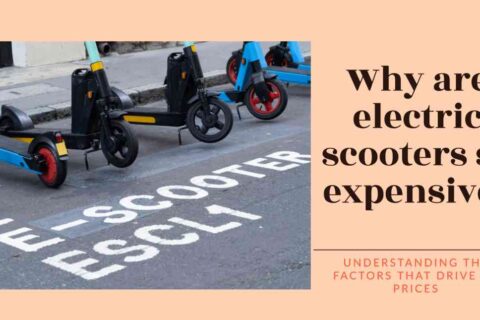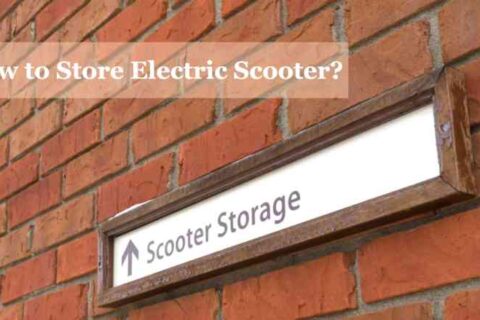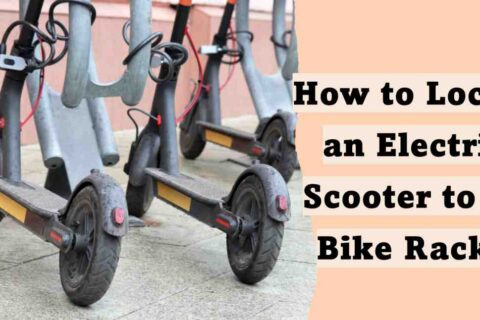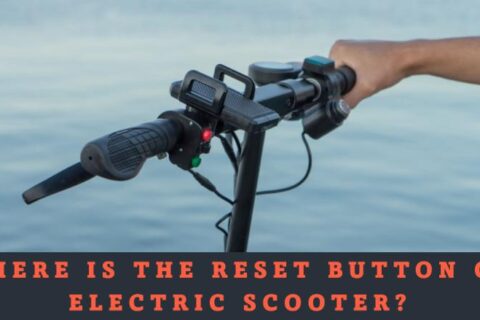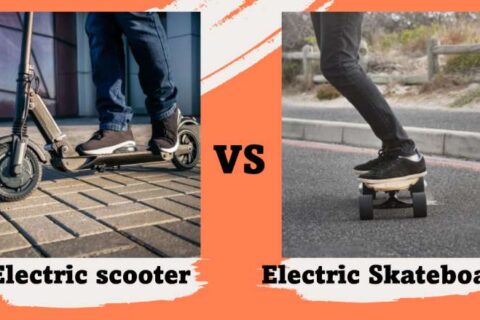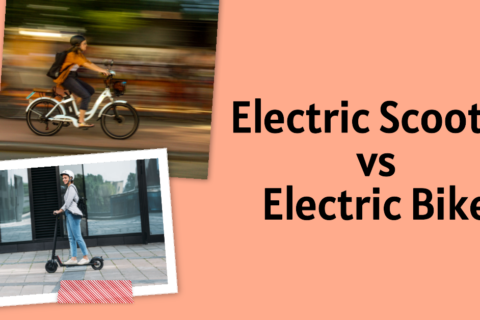When it comes to choosing between a hoverboard and an electric scooter, it’s essential to weigh the pros and cons of those rides.
In this article, we’ll dive into the hoverboard vs electric scooter comparison and help you make an informed decision. Are you wondering which option is better suited for your needs?
Stick with us as we explore the features, benefits, and considerations of both hoverboards and electric scooters. Whether you’re a tech enthusiast or a commuter looking for a convenient ride, we’ve got you covered.

Table of Contents
ToggleHoverboard vs Electric Scooter: Basic Overview
Hoverboards and electric scooters have revolutionized personal transportation, offering unique and efficient ways to get around.
Hoverboards, with their self-balancing technology, provide an exhilarating ride where you effortlessly shift your weight to control movement.
Electric scooters, on the other hand, are becoming increasingly popular for urban commuting. These sleek vehicles are powered by electric motors and feature a lightweight frame and a handlebar for steering.
Packed with features like powerful electric motors, Bluetooth speakers, LED lights, and smartphone apps, Electric scooters offer a thrilling and customizable experience.
A comparison table highlighting the key differences between hoverboards and electric scooters:
| Features | Hoverboards | Electric Scooters |
|---|---|---|
| Design | The self-balancing platform on two wheels | Handlebar steering with standing or seat |
| Safety | More prone to malfunctions and accidents due to complex sensors | Sturdier, easier to maneuver, and feature handlebars for better balance |
| Ride Experience | Unique balance-based control | Familiar bike/motorcycle-like experience |
| Speed Range | 6-12 mph (10-19 km/h) | 15-30+ mph (24-48+ km/h) |
| Portability | Compact and lightweight | May feature foldable designs |
| Terrain Compatibility | Best on flat, smooth surfaces | Versatile, can handle various terrains |
| Stability | Limited on uneven surfaces | Better stability with larger wheels |
| Price Range | $100-$500 | $300-$2,000+ |
Also Read: Electric Scooter vs Electric Skateboard: The Ultimate Showdown
Speed of hoverboard vs electric scooter
When it comes to speed, hoverboards and electric scooters offer different experiences.
Hoverboards are known for their agility and ability to navigate tight spaces with ease. They typically have a maximum speed ranging from 6 to 10 miles per hour (10-16 km/h), making them suitable for leisurely rides and short commutes.
And electric scooters are designed for a slightly faster pace. Depending on the model and motor power, electric scooters can reach speeds ranging from 15 to 25 miles per hour (24-40 km/h), offering a more rapid and efficient mode of transportation.
Range comparison
Hoverboards usually have a range of around 6 to 12 miles (10-19 km), which makes them ideal for short trips or recreational rides. They are popular among students and urban dwellers who need a compact and convenient option for short-distance travel.
Electric scooters, on the other hand, have a longer-range capacity. Depending on the battery capacity and riding conditions, electric scooters can cover distances of 15 to 30 miles (24-48 km) or even more. This range allows for extended commutes or exploring larger areas without worrying about running out of battery power.
Portability
When it comes to portability, hoverboards have the upper hand. They are lighter and more compact than electric scooters due to their lack of handlebars and other weight-adding components. On average, hoverboards weigh around 26 lbs (12 kg), and it’s rare to find models exceeding 33 lbs (15 kg). This lightweight design makes them incredibly easy to carry and transport.
Alternatively, electric scooters, while slightly larger and heavier than hoverboards, still offer foldable and portable options. They may require a bit more effort to carry, but their practicality for transportation and commuting outweighs the slight increase in weight. On average, commuter electric scooters for adults weigh around 28.6 lbs / 13 kg, while the majority of models range from 22 to 42 lbs / 10 to 19 kg.
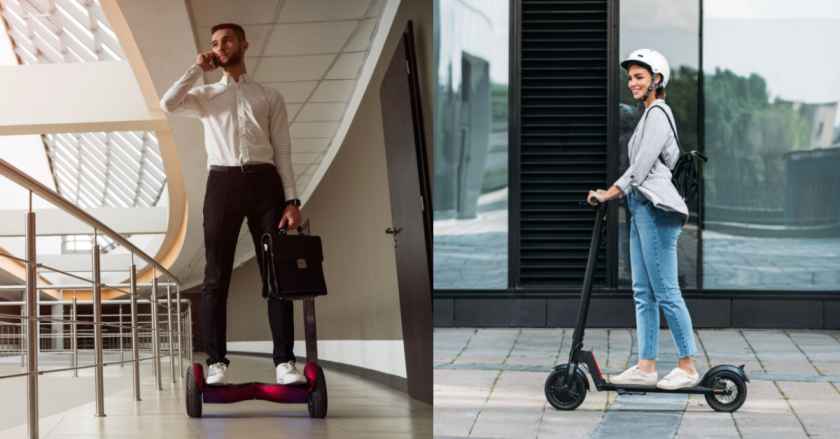
Maneuverability
Hoverboards require a steeper learning curve as riders must learn to manipulate their bodies to activate the internal gyroscopic sensors. They have a compact design that allows for tight turns and easy navigation in crowded areas.
But the lack of handles makes them more challenging to learn and increases the risk of falling, especially during the initial learning period.
On the other hand,
Electric scooters are easier to maneuver around potential obstacles and offer a more stable and balanced ride. With their handlebars and larger size, they provide a firm grip, making them suitable for longer commutes and more challenging terrains.
Easy of Use
When it comes to ease of use, electric scooters have the advantage.
They are designed with familiar controls like a throttle, brake, and handlebars, making them intuitive and easy to ride. In just a few minutes, you can get the hang of it.
Hoverboards, on the other hand, require a bit more practice and balance to master, especially for young children.
Overall, both options can be enjoyed with some practice, but electric scooters offer a more straightforward and user-friendly riding experience.
Safety Features
Hoverboard
One of the key safety features of a hoverboard is the inclusion of gyroscopic sensors that help maintain balance and stability while riding. These sensors detect changes in the rider’s center of gravity and make adjustments to keep the hoverboard level.
Additionally, many hoverboards now come with built-in LED lights, providing better visibility, especially during low-light conditions.
Some models also incorporate fender bumpers that protect the wheels and help absorb impact in case of collisions.
Electric scooter
Electric scooters come with various safety features which include an anti-lock braking system (ABS) that prevents wheel lock-up and reduces the risk of skidding,
A suspension system that absorbs shocks for a smoother ride,
Wide tires for improved stability and a low center of gravity for enhanced balance.
Electric scooters also have intuitive throttle controls for better speed management. These features work together to minimize the risk of accidents and injuries, ensuring a safer riding experience.

Cost of hoverboard vs electric scooter
It’s important to evaluate the cost implications when considering a hoverboard or an electric scooter. Hoverboards generally have a lower upfront cost compared to electric scooters.
Depending on the brand and features, hoverboards can range from $100 to $500.
And electric scooters typically have a higher price range, starting from $300 and going up to $1,500 or more for premium models with advanced features.
Maintenance expenses
Maintenance costs are another factor to consider. Hoverboards have relatively low maintenance requirements. Regular cleaning, tire inspection, and occasional battery replacements are typically the main maintenance tasks. Battery replacements can range from $50 to $150, depending on the model.
Electric scooters require additional maintenance due to their design. This can include tire replacements, brake adjustments, and occasional motor servicing. The maintenance costs for electric scooters can vary significantly depending on the brand and model, ranging from $100 to $300 or more per year.
Suitable age group for riding
Hoverboards are suitable for a wide range of age groups, but it’s important to consider the physical abilities and coordination required to safely operate them.
Hoverboards may make it unsafe for younger riders cause of no handles to balance. Generally, hoverboards are recommended for individuals aged 12 and above.
At this age, most individuals have developed the necessary balance and coordination skills to ride a hoverboard confidently.
Electric scooters cater to a broader age range, from children to adults. Many electric scooters have a minimum age recommendation of around 8 to 10 years old, depending on the specific model and local regulations.
These scooters often come with adjustable handlebars and speed settings, allowing parents to set appropriate limits for younger riders. Electric scooters designed for teenagers and adults typically have higher weight capacities and faster speeds to accommodate different age groups.
Popular Brands and Models
Top hoverboard brands and models
| Model | Key Features | Recommended For |
|---|---|---|
| Hover-1 Ultra Hoverboard | Best overall hoverboard for your money | All riders |
| Swagtron T380 | Considered one of the best hoverboards for 2023 | All riders |
| Hovertrax Prizma | Best overall hoverboard for kids | Kids |
| Titan Hoverboard | Best overall hoverboard for adults | Adults |
| Gyroor Warrior 8.5 inch Off-Road Hoverboard | Suitable for off-roading | All riders |
| Segway Ninebot S Smart Self-Balancing Hoverboard | Best-designed hoverboard | All riders |
| Razor Hovertrax 2.0 | Best-selling hoverboard known for reliability and safety features | All riders |
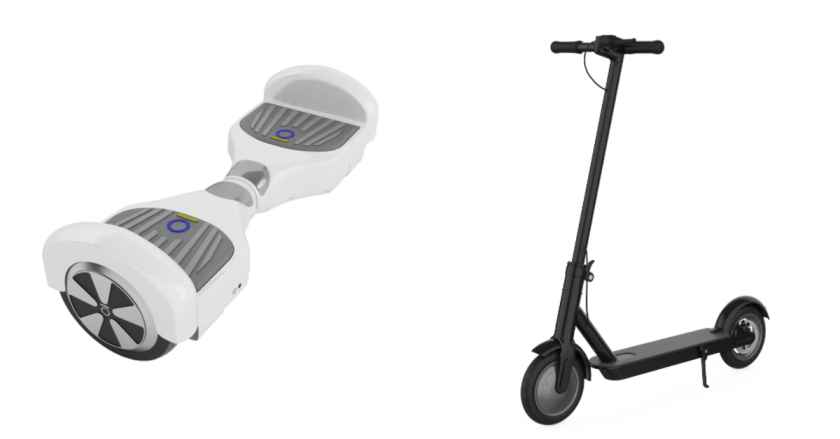
Well-known electric scooter brands and models
| Electric Scooter Brand | Popular Models |
|---|---|
| GoTrax | Affordable and well-performing models |
| NIU Kqi3 Max | Considered the best overall electric scooter |
| Hiboy S2 | One of the best electric scooters of the year |
| Unagi Model One | Considered the best lightweight electric scooter |
| Segway Ninebot Kickscooter Max | Best electric scooter for commuting |
| Apollo City | Considered the best electric scooter overall |
| Razor E100 | Best electric scooter for kids |
| Dualtron | High-performance electric scooters |
| Voro | High-quality electric scooters |
| Xiaomi | The popular brand known for high-quality and affordable models |
Hoverboard vs electric scooter: Which is the right choice for you?
When making your decision, it’s essential to consider factors such as speed, range, portability, safety features, and cost. Assess your daily commute, the distance you need to travel, and the terrain you’ll encounter.
If you’re looking for a compact and nimble option for short urban trips, a hoverboard might be the right choice for you.
On the other side, if you need a versatile and efficient mode of transportation for longer distances, an electric scooter could better suit your needs.
Hoverboard
Future Trends and Innovations
Hoverboard technology is advancing rapidly, and two key trends are emerging.
First, advanced sensors and AI algorithms are improving self-balancing capabilities and making the riding experience more intuitive.
Second, off-road hoverboards with rugged features are expanding possibilities for adventurous riders on various terrains.
Electric scooter
Electric scooters have seen remarkable advancements in design and technology. Lightweight yet durable materials like carbon fiber and aluminum alloys are being incorporated, making scooters more portable.
Swappable batteries allow for quick battery replacements, extending the scooter’s range. Moreover, smart features and smartphone connectivity enhance the user experience.
As technology progresses, further developments, including better battery efficiency, more powerful motors, and enhanced safety systems, can be expected, promising an even more enjoyable ride in the future.
Frequently Asked Questions (FAQ)
Are hoverboards and electric scooters legal to ride on public roads?
The legality of riding hoverboards and electric scooters on public roads varies by jurisdiction. In many places, electric scooters are regulated similarly to bicycles and may be allowed on bike lanes or designated paths. However, laws regarding hoverboards can be more restrictive.
What safety precautions should I take when riding a hoverboard or electric scooter?
When riding a hoverboard or electric scooter, it’s crucial to wear appropriate safety gear, including a helmet, knee pads, and elbow pads. Follow traffic rules, signal your intentions when turning, and be aware of pedestrians and vehicles around you. Practice riding in a controlled environment before venturing onto busy streets.
How fast can hoverboards and electric scooters go?
The speed of hoverboards and electric scooters can vary depending on the model and specifications. Hoverboards typically have a maximum speed ranging from 6 to 12 miles per hour (10 to 19 kilometers per hour). Electric scooters, on the other hand, can reach higher speeds, with some models capable of exceeding 20 miles per hour (32 kilometers per hour).
Can hoverboards and electric scooters be used in wet weather conditions?
Most hoverboards are not designed for use in wet weather conditions. Water can damage the electrical components and affect the traction of the wheels, leading to a loss of control. But for electric scooters, most manufacturers consider water-resistive technology in weather like rain, snow, or wet road conditions. But always ensure that your device has the appropriate IP rating for water resistance and take extra caution.
How long do the batteries of hoverboards and electric scooters last?
Battery life can vary depending on the model, battery capacity, and usage. On average, hoverboards can provide a range of 6 to 12 miles (9 to 19 kilometers) on a single charge, while electric scooters can offer a range of 15 to 30 miles (24 to 48 kilometers) or more.
Can I carry hoverboards and electric scooters on public transportation?
Policies regarding carrying hoverboards and electric scooters on public transportation differ depending on the transit agency and local regulations. Some systems may allow them, while others may have restrictions or require specific guidelines. It’s advisable to check with the transportation provider before using transportation.
Conclusion
Both hoverboards and electric scooters offer unique benefits and features that cater to different needs and preferences.
Hoverboards provide a futuristic and exhilarating riding experience, with their self-balancing technology and maneuverability, making them a popular choice for recreational purposes. Electric scooters offer practicality and efficiency for urban commuting, with their faster speeds, longer ranges, and more stable designs.
Ultimately, the right choice between hoverboards and electric scooters depends on individual preferences, intended use, and specific requirements.
Considering factors such as portability, maneuverability, speed, range, and safety features will help individuals make informed decisions based on their lifestyle and transportation needs.



